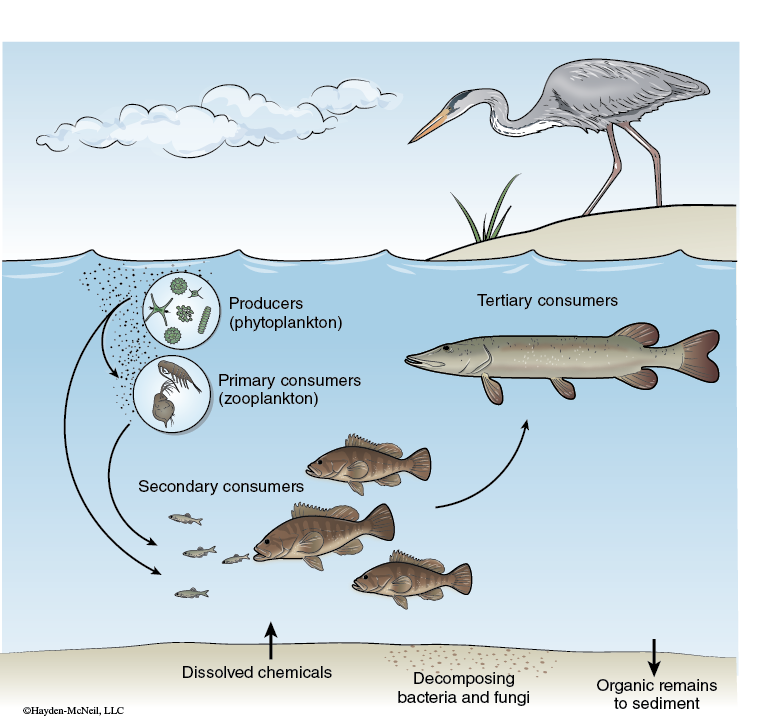Chapter 2. ECOSYSTEM ECOLOGY—AQUATIC I—SAMPLING
Learning Objectives
General Purpose
Conceptual
- Be able to determine the change in an ecosystem caused by either biotic or abiotic factors.
- Determine the relationship between autotrophic and heterotrophic factors and energy flow in an ecosystem.
General Purpose
An ecosystem is made up of all the populations of organisms (the community) as well as all of the non-living factors in a defined area. The area may be predefined (the Pacific Ocean, the University Lake system) or the area may be defined by the researcher (1 square mile in the Kisatchie National Forest). The organisms in an ecosystem interact with their environment. In these interactions the organisms of the community in the ecosystem may be impacted by the environmental factors. In addition, the organisms in an ecosystem can cause changes in the environmental factors. The environmental factors include biotic factors (the populations present) and abiotic factors (water, light, nutrients, temperature, soil type, topography, etc.).
View the following video for a discussion of basic aspects of ecosystem ecology.
One of the main aspects in studying an ecosystem is understanding the energy flow in the ecosystem. Th e energy fl ow in an ecosystem includes the basic food web structure of the ecosystem (see Figure 5-1).

Autotrophs are the primary producers in the ecosystem. Photoautotrophs harvest light energy and convert it into chemical energy through photosynthesis. The amount of energy they convert is the gross primary production (GPP) for the ecosystem. All biochemical energy in ecosystems is initially introduced into the system through autotrophs. Heterotrophs and autotrophs can both use this chemical energy through cellular respiration (R), which converts chemical energy in one form to chemical energy in a more directly usable form for the cells of the organism. The net primary production (NPP) is the energy produced by autotrophs in excess over that used by heterotrophs and autotrophs. The NPP is an indicator of the production of the entire ecosystem.
One way to indirectly assay the amount of photosynthesis (and therefore the GPP) within an ecosystem is to measure the chlorophyll present. As the number of photoautotrophs goes up, the chlorophyll should also rise.
In this lab you will examine a number of factors (including chlorophyll level) that are characteristic of an ecosystem.
Pre-Lab Quiz
Proceed to the Pre-Lab Quiz